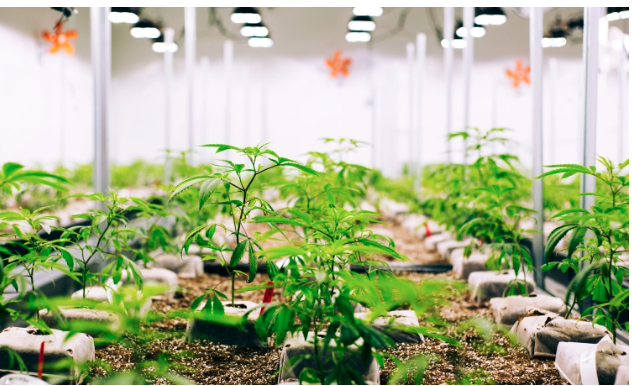Growing an Ounce of Pot Indoors is Like Burning a Full Tank of Gas
LOS ANGELES- Demand for cannabis is rising as more states legalize it for medical and recreational use, and around half of that demand is met by totally indoor grow operations.
According to Krista Charles, writing for the New Scientist, she points to a recent study that raises concerns about the environmental impact of the growing legal cannabis sector by indicating that in some regions of the nation, these indoor grow houses are substantial emitters of greenhouse gasses that warm the earth.
Depending on where in the United States it is grown, the researchers who conducted the study, which was published this week in the journal Nature Sustainability, calculated that the emissions associated with growing 1 ounce of cannabis indoors are roughly equivalent to burning 7 to 16 gallons of gasoline.
These emissions result from the substantial amounts of heating and power needed to maintain the plants. The most energy-intensive part of indoor cannabis production is lighting, but substantial amounts of electricity are also needed for heating, cooling, and, in some locations, dehumidifying the air. In order to hasten development, several producers even pump in carbon dioxide, which plants utilize for photosynthesis.
According to Colorado State University engineer and senior author of the report Jason Quinn, “Policymakers and consumers aren’t paying much attention to the environmental implications of the cannabis sector.”
“Cannabis grown inside is subject to little or no regulation regarding emissions. Consumers also don’t take the impact on the environment into account. Without regard for the environment, this sector is growing and developing swiftly.

(An indoor cannabis grow in California)
The Colorado Argue University researchers state that in Colorado, for instance, the greenhouse gas emissions from the cannabis industry (2.6 megatons of carbon dioxide) are higher than those from the coal mining sector (1.8 megatons of carbon dioxide).
In Southern California, indoor cannabis cultivation produces the least amount of emissions, with each ounce of dried cannabis emitting the equivalent of 143 pounds of carbon dioxide into the environment, according to the study. The state’s electricity grid, which uses renewable energy sources and benefits from the area’s temperate temperature, is to thank for the low emissions.
The regions with the largest greenhouse gas emissions are the Mountain West, the Midwest, Alaska, and Hawaii because these regions utilize a lot of electricity and natural gas to maintain ideal humidity and temperature levels in their growing operations.
According to the Conversation, the study discovered that eastern O’ahu, Hawaii, had the highest carbon emissions, with the equivalent of 324 pounds of carbon dioxide being released for every ounce of dried cannabis produced.

According to Gizmodo, the study authors used weather data from more than 1,000 places across the U.S. to create a model that evaluated the carbon emissions produced by average indoor cannabis cultivation and adjusted its settings for various regions.
In other words, the model could calculate how much energy would be required to maintain a grow room at the ideal temperature and humidity for cannabis based on the environment of a particular area.
In order to account for the varied emissions associated with various sources of electricity production, the model converted that energy usage into equivalent emissions of carbon dioxide using government data on local power systems. Finally, the model also took into account “downstream” emissions from waste products as well as “upstream” emissions from substances like fertilizer, water, and fungicide utilized by indoor cannabis production.
(A map showing the life cycle greenhouse gas emissions from indoor cannabis cultivation across the U.S.)
The model calculated that generating one kilogram (2.2 pounds) of dried cannabis generated 2 to 5 tons of carbon dioxide into the environment on average.
The paper’s estimates may be understated, according to Evan Mills, a retired energy efficiency researcher who formerly worked at the Lawrence Berkeley National Laboratory in California, because they don’t take emissions from processing or storage into consideration.
Moving activities outside or into greenhouses with glass walls that don’t require grow lights, according to the study’s authors, could significantly reduce emissions from the cannabis business.
According to John Timmer of Ars Technica, the researchers predict that in Colorado, a complete shift to outdoor production will lower greenhouse gas emissions by 96 percent, reducing the state’s overall emissions by 1.3 percent. By switching to greenhouses, emissions would drop by 42%.
Moving everything outside, however, does not make cannabis’s negative environmental effects go away.
According to the study’s lead author, sustainability researcher at Colorado State University Hailey Summers, “beyond greenhouse gas emissions, there are also many additional environmental factors that need to be taken into account, including illegal water diversion, pesticide use, and land-use change.”
“A combination of the three main growth systems—indoor, greenhouse, and outdoor—will probably be the best approach.”



































